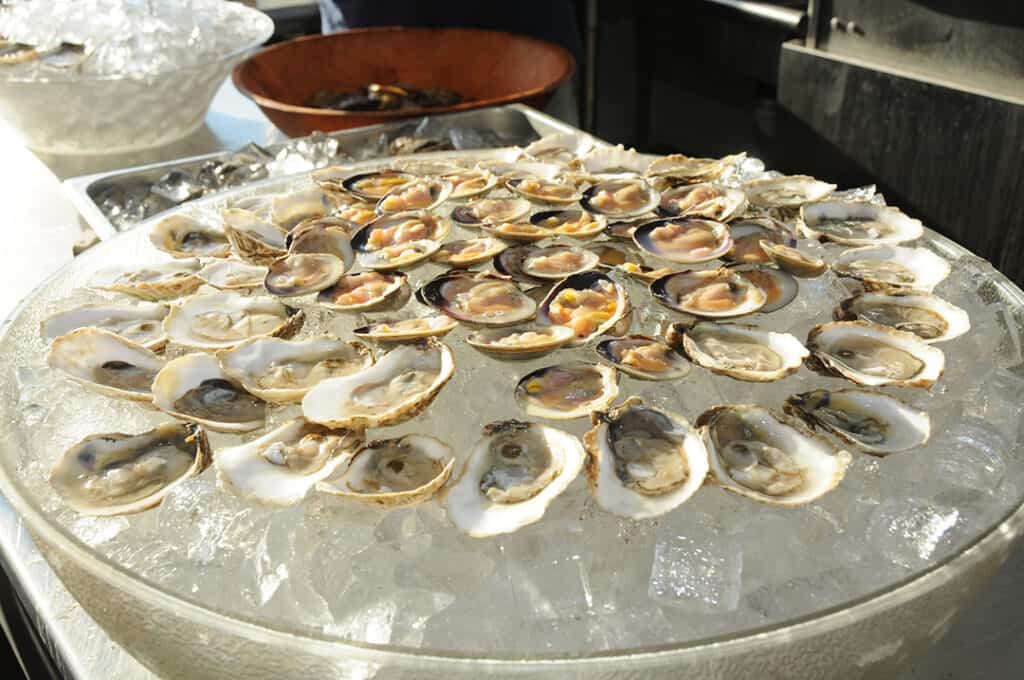Stemming The Tides Of Change In Montauk
Anyone who has lived on the East End for any length of time has a real estate story about “the one that got away”. “I could have bought a cottage in Ditch Plains for $28,000”, “There was an acre on the ocean for $88,000”. Since Montauk has been “discovered”, there are more of such stories than ever. Every square foot of land at “The End” is accounted for, and experiences regular astronomical increases in market value. Many of Montauk’s original families are cashing out and moving to Florida, the Carolinas and to areas closer to their extended families around the United States. There is now even more pressure on land usage, caused by recent studies suggesting that Downtown and Oceanfront Montauk might have to retreat from rising sea levels.

Photos: Richard Lewin
It is not only dry land, but also Montauk’s waters that are experiencing this kind of pressure. Since Montauk, really a peninsula, has always been a fishing-dependent community, ownership and control of its waterways are equally as important as land management. Regarding inland waterways, both the shores and the bottom lands of Lake Montauk are being prepared for maximum value, with dredging proposed to allow for the docking of larger vessels, and ownership of bottom lands in dispute.
Change doesn’t happen easily or swiftly in the Montauk community, especially when it comes to its fishing heritage. The South Fork Wind Farm, 35 miles off its Atlantic shore, for example, has taken years to be approved because of concerns about the potential disruption of the eco-system of local sea life. In order to keep their independent businesses going, local entrepreneurs in the fishing and related industries are now being forced to adapt to a barrage of property transfers, regulations, permitting procedures and more, besides their daily rigorous duties.
One who has survived it all is naturally born bayman Mike Martinsen, founder and owner of Montauk Pearl Oysters. From the day he sold his first Radio Flyer full of Eaton’s Neck oysters at age 11, for $224, Mike knew he was “hooked”. In 1994 Mike’s passion for a bigger catch brought him to Montauk, where he took his first job fishing for squid on the 87-foot “Atlantis”. Mike wanted to be the captain of his own ship. Through successive steps up in boat size and capacity, business expanded. For the boat-savvy, Mike has owned: a 16-foot Pickerell Sharpie, a 20-foot Garvey, a 20-foot Eastporter, a 21-foot Steiger Craft, a 36-foot Novi Lobster Boat, and a 28-foot Arvitson.

Besides the pressures of dealing with real estate related issues, the expansion of Montauk Pearl Oysters has faced other challenges unique to the industry…local complete die-offs of varieties of catch. These have included the oyster die-off of 1996/1997 from Dermo and MSX, the 1999 lobster die-off due to the effects of climate change and malathion, and the 2001 clam die-off from QPX Quahog Parasite disease.
Relocation has been another constant challenge for Mike, leading him to locations on Block Island Sound off Culloden Point, the shoreline of Lake Montauk (becoming smaller and smaller due to local development), and a ten-acre site on Napeague Bay, among others.
Wherever he goes, he travels on boats he has custom rebuilt himself, with his oyster cages, buoys, and other necessary equipment aboard. Mike sees the ecological benefits of oyster-based aquaculture in three areas, including “recruitment”, which helps create a “mother stock” (the next generation of oysters); the filter feeding function of oysters filters nitrogen, algae, phosphorus, carbon, and phytoplankton out of the water. In addition, the oyster cages provide a perfect habitat for seaweeds, sponges, blackfish, black sea bass, cunner, lungfish, fluke, and others.
One of the top idealists and optimists about Montauk’s fishing future, Mike was recently recruited to the East Hampton Town Trustees. He hopes that his role there will help him be part of the preservation of Montauk’s fishing heritage. Time will tell.











![Next weekend, the Hamptons International Film Festival returns with a powerful slate of films, global premieres, and community connection. 🎬 From narrative dramas to groundbreaking documentaries, this East End tradition brings the art of cinema to life in unforgettable ways. [link in bio]](https://hamptonsrealestateshowcase.com/wp-content/uploads/sb-instagram-feed-images/553311384_18536395384030135_7815196520249715018_nfull.webp)





![Picnic season isn’t over just yet. From crisp whites to collapsible tables, a few well-chosen essentials can turn any outdoor moment into something special. We’ve curated a list of favorites to help you make the most of every last warm day. [link in bio]](https://hamptonsrealestateshowcase.com/wp-content/uploads/sb-instagram-feed-images/550776784_18534662161030135_2052866662940107332_nfull.webp)
![Seaside gardens are more than just beautiful, they’re built to endure. With the right plants, structure, and intention, coastal landscapes can thrive in even the toughest conditions. Designers share how to blend aesthetics with resilience for a garden that’s both striking and sustainable. [link in bio]](https://hamptonsrealestateshowcase.com/wp-content/uploads/sb-instagram-feed-images/552039742_18534454579030135_6181491184247772098_nfull.webp)
